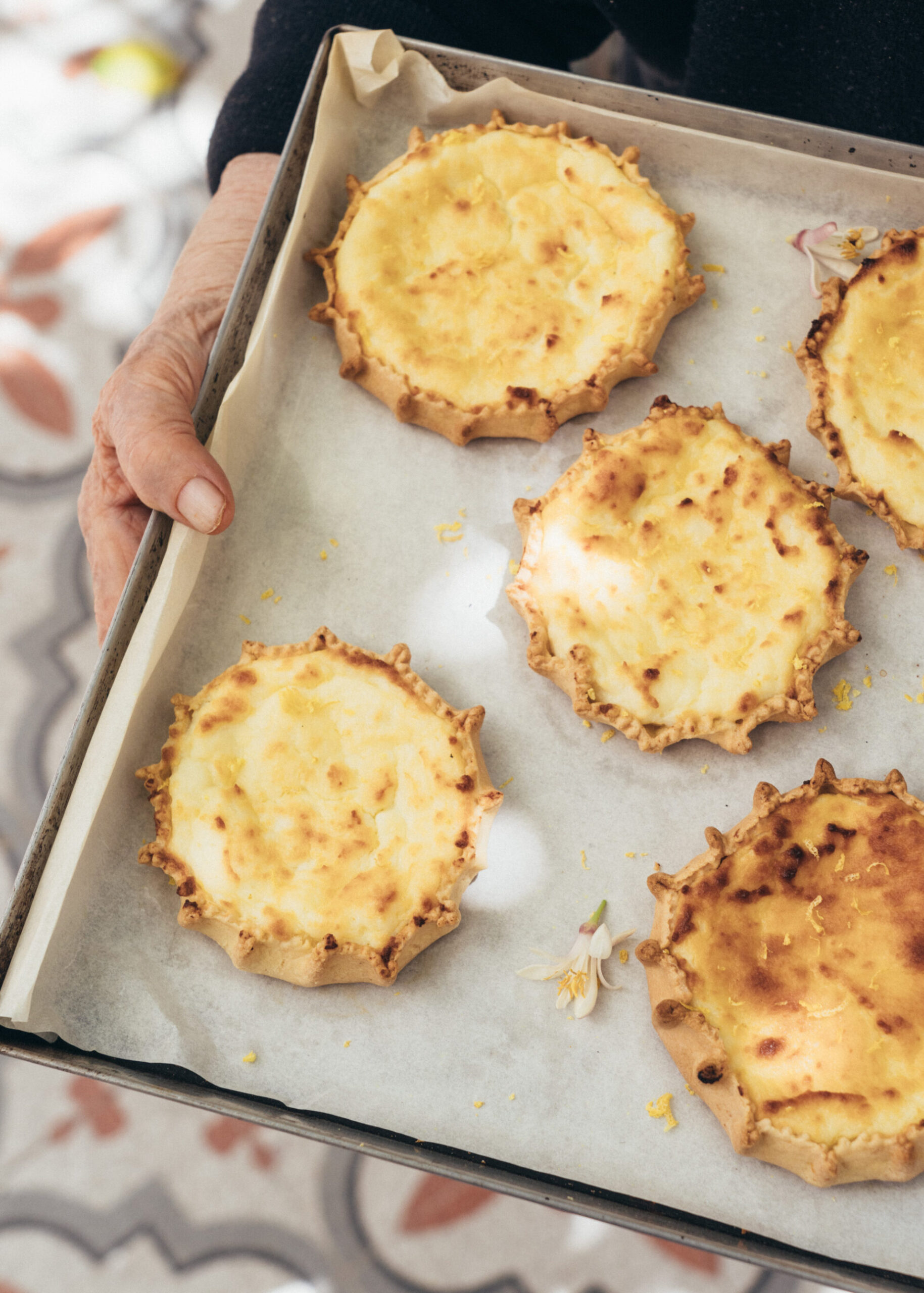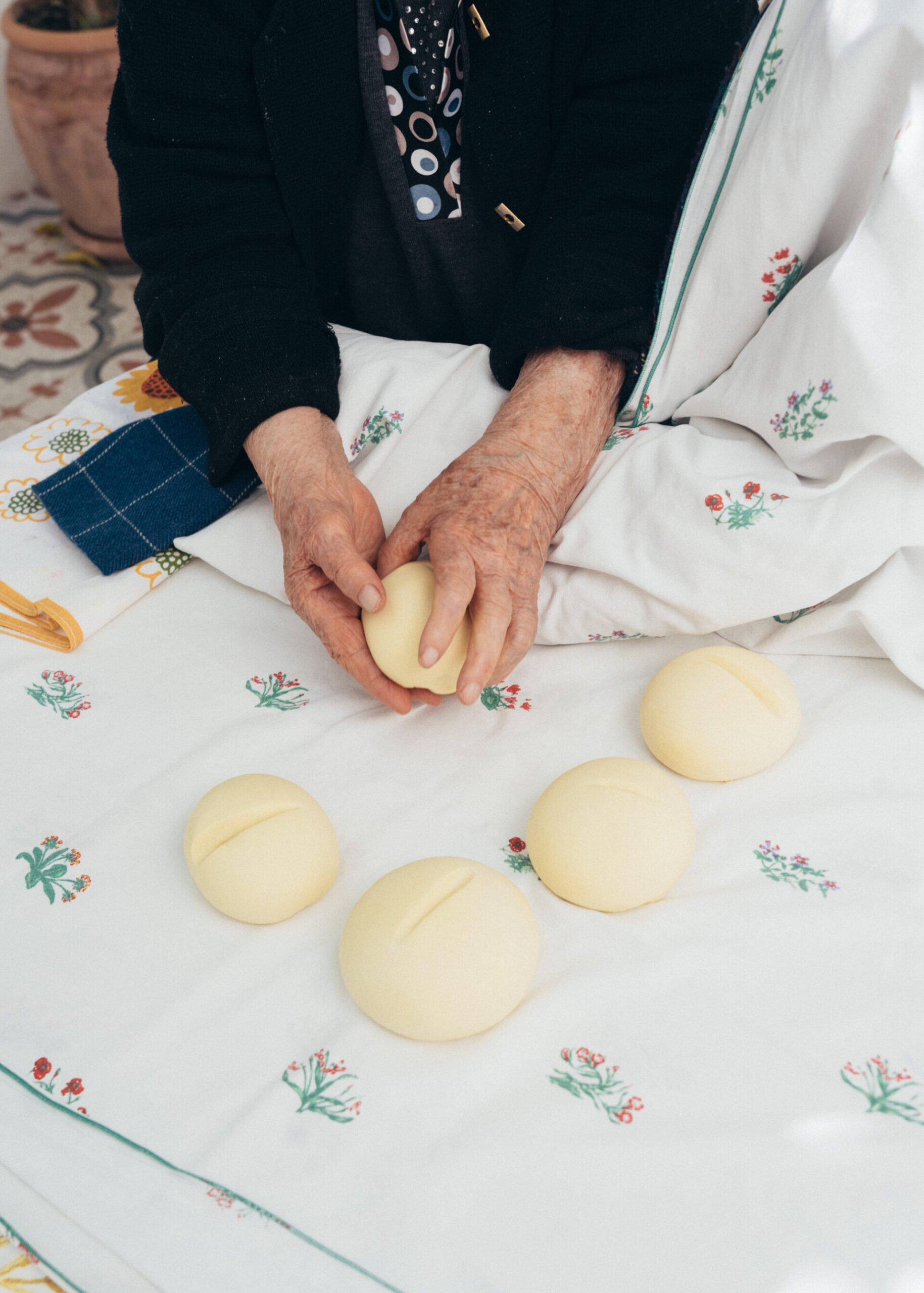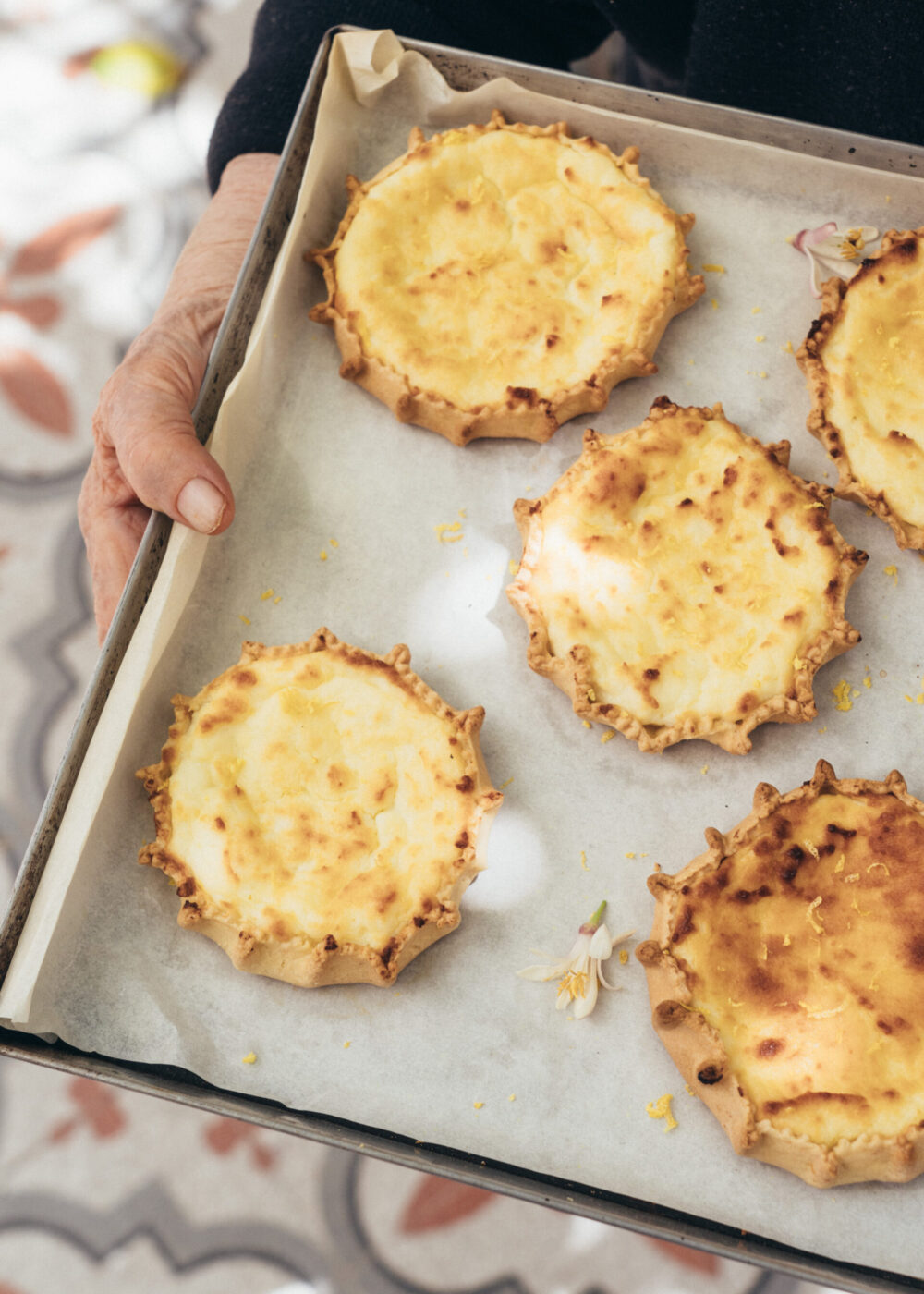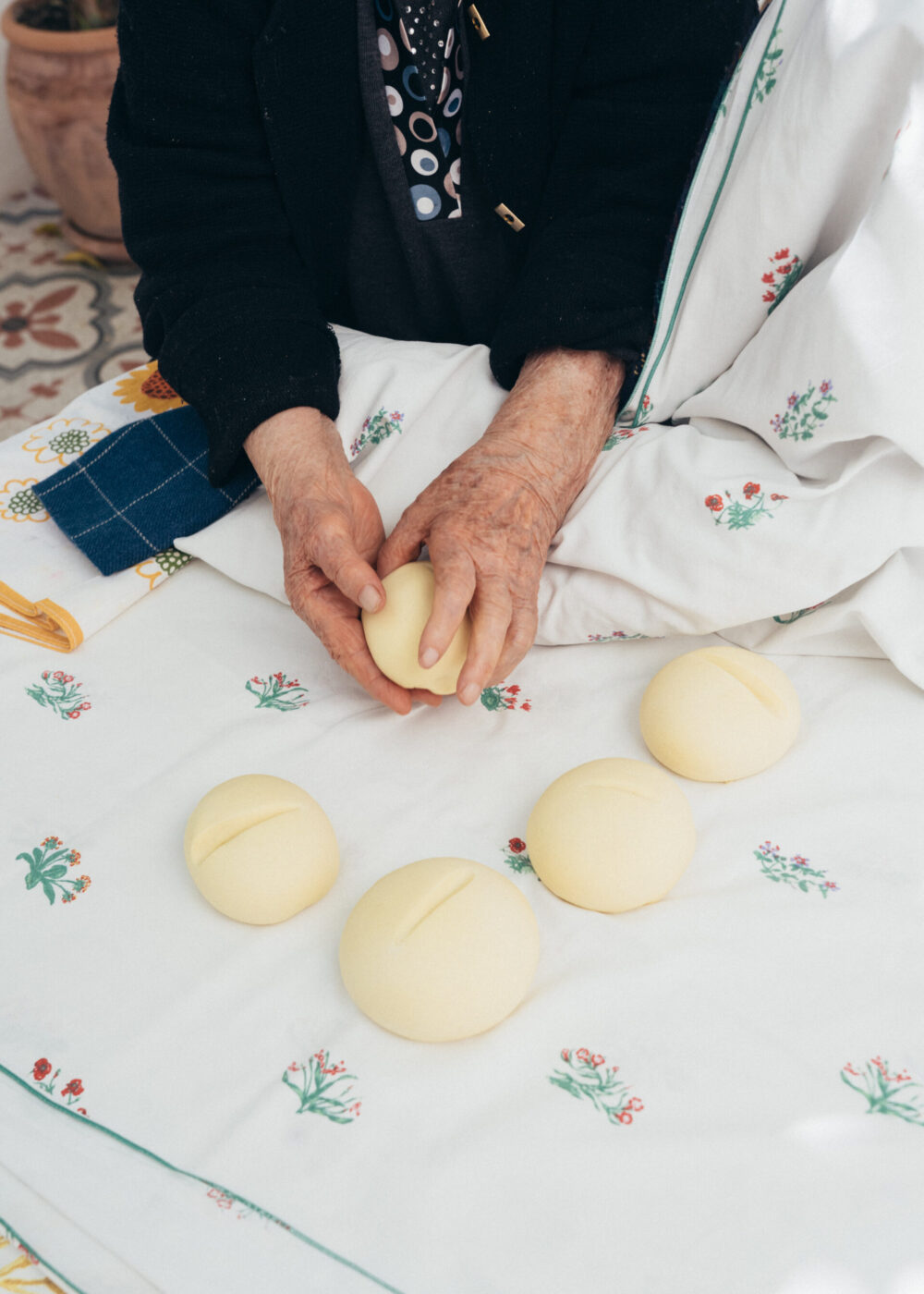Editor’s Note: This recipe comes from Mediterranea by Anastasia Miari (Quadrille, £28; photography © Marco Argüello), which includes recipes by and stories of nonne from all over the Mediterranean. Ricotta, Sicily’s powerhouse ingredient, makes its way into sweet and savory preparations alike, and these simple lemony delights from Nonna Cece highlight it best.

Photo from Mediterranea by Anastasia Miari (Quadrille, £28; photography © Marco Argüello)
Nonna Cece concludes an epic morning of cooking with her sweet ricotta filled tarts, native to her Sicilian hometown of Ragusa. Ricotta is used across the island in a range of desserts, but these cassatelle are made exclusively here and are not known to every Sicilian, so I feel honored to be inheriting Cece’s generations-old recipe. She uses semolina (farina) in her pastry, which is hardy enough to take wet fillings without the need to par-bake, eliminating the risk of a soggy bottom and making the preparation process a lot simpler.
I love the crisp, biscuity crunch of Cece’s pastry, perfectly complemented by the smooth ricotta. We eat ours under falling orange blossom so, of course, I’ve tested my own with a dash of orange blossom water on occasion, attempting to relive a perfectly warm Sicilian spring day with the sweetest nonna. Serve this after Cece’s Citron Salad.
Serves 6-7
INGREDIENTS
FOR THE PASTRY
- 125 g (4 1/2 oz or 1 cup) hard durum wheat flour (semola rimancicata/fine semolina/farina)
- 125 g (1 1/2 oz or 1 cup) plain (all-purpose) flour, plus extra for dusting
- Pinch of salt
- 25 g (1 oz) caster (superfine) sugar
- Zest of 1 lemon
- 50 g (1 3/4 oz) cold unsalted butter or lard, cubed
- 1 medium egg, beaten
- 60 ml (2 fl oz or 1/4 cup) ice-cold water, if needed
FOR THE FILLING
- 500 g (1 lb 2 oz) ricotta, drained
- Zest of 1 lemon, plus extra to serve
- 75 g (2 1/2 oz) caster (superfine) sugar
- 1 tablespoon lemon juice
PREPARATION
- First, make the pastry. Combine the two flours, the salt, sugar, and lemon zest in a large bowl. Add the butter or lard and rub between your fingers until a fine, sandy crumb forms, like you’re making a crumble.
- Add the egg and gently stir through with a wooden spoon—it should start to look like a coarser crumble. If it looks hydrated enough, use your hands to bring the dough together in a squeezing motion (just combine it, don’t knead it). If it still looks dry, add the water little by little and bring it together with your hands—it should be firm but not too wet or dry. It’s very important not to overwork the dough as you don’t want the gluten to overdevelop and the pastry to become tough.
- Divide the dough into two equal parts and press those into disc shapes. Wrap each one in cling film (plastic wrap) and chill in the refrigerator for 1–2 hours (or you can make it the day before and leave it overnight, like Nonna Cece). If you leave it overnight, remove it from the refrigerator a few minutes before rolling to avoid cracking.
- When you are ready to make the filling, mix together the ricotta, lemon zest, and sugar in a bowl until nice and smooth. Stir in the lemon juice and set aside in the refrigerator.
- Preheat the oven to 180°C fan (400°F) and line a baking sheet with baking parchment.
- Take the dough discs out of the refrigerator and roll them out on a lightly floured surface into two large circles, about 2 mm thick. Place an upturned bowl (about 14 cm or 5 1/2 inches in diameter) on top of the dough and trace around the rim with a knife to cut out circles of dough—you should get at least three per disc of dough (re-roll the offcuts as needed). Place 3 1/2 tablespoons of the ricotta mixture in the middle of each circle, then pinch the sides of the dough together all around the outside to create points—if the dough is not sticking together, use the tiniest amount of water on your finger to bring the sides together and pinch firmly to stop them popping open in the oven. Repeat with the remaining dough.
- Place the tarts on the prepared baking sheet and bake in the oven on the bottom shelf for 20–25 minutes. After this time has passed, check the bottom is golden, then move onto the top shelf for a final 10 minutes. Remove from the oven and leave to cool, then grate over some more lemon zest before serving.


